2020 Porsche 718 Cayman GT4 Review: Upon Reflection, Some Other Things Might Matter

It’s called a mixed tension migraine and my week in the Porsche 718 Cayman GT4 has made me intimately familiar with the concept. The nigh unadjustable racing bucket seats and my body had a disagreement and the seats won. So, giving you an unbiased impression of the car will be difficult since I was fighting back nausea, neck pain, and irritability.
It will be hard for me to describe to you how disappointing my week in the 718 Cayman GT4 was because much of the disappointment is at my own wretched weakness. Having said that, though, I’m not often disappointed by my own wretched weakness, so this may serve as a warning of sorts.
Takes Time to Make Time
Even when it wasn’t highlighting the failures of my body’s construction, the GT4’s charms weren’t all immediately apparent. The experience can best be summed up by the car’s torque curve. There’s an old adage that goes something like “people shop for horsepower, but they buy torque” and the modern automotive landscape is, in many ways, a result of that thinking.
Turbocharging and a paranoid fear of lag related thereto have given us a generation of cars whose torque is all available at less than 2,000 rpm and plateaus into the 5,000 rpm range. Great, wonderful, sexy. These cars launch hard and are great for impressing your friends who have seen videos of Tesla’s Ludicrous mode. The GT4 doesn’t really do that, though.
SEE ALSO: 2020 Porsche 718 Spyder Review: … and Nothing Else MattersFor the 718 Cayman GT4, Porsche decided on a different torque curve. That means that when you hop in and pull out onto the street and run from 2,000 rpm up to about 3,500 rpm, as you’re likely to do on a public road the first time you give the car a tentative push, you don’t get as much back as you were expecting. It’s a little disheartening, frankly. Indeed, by Porsche’s own estimates, it hits 60 mph in 4.2 seconds, which don’t get me wrong, is fast, but is also kind of a nothing number. Objectively, 4.2 seconds is quick, but an Audi A7 with a V6 will get to 60 in 4.5 seconds, so it’s not exactly supercar quick. But to the people who are brave enough to hang onto revs, rewards are forthcoming. The GT4’s torque lies up high and performance is only for those who are willing to climb the highest peaks of the rev range. Speed builds, and builds, and seemingly builds forever, the whole time delivering more and more thrust. Max torque of 310 lb-ft is reached at 5,000 rpm and lasts until 6,800 rpm. The GT4’s 414 horsepower takes over from there and maxes out at 7,600 rpm—and the redline doesn’t come until 8,000 rpm.
FAST FACTS
| Engine: | 4.0L F6 |
| Output: | 414 hp, 309 lb-ft |
| Transmission: | 6MT, RWD |
| US fuel economy (MPG): | 16/23/19 |
| CAN fuel economy (L/100KM): | 14.3/10.6/12.6 |
| Starting Price (USD): | $100,200 (inc. dest.) |
| As-Tested Price (USD): | $126,690 (est, inc. dest.) |
| Starting Price (CAD): | $115,300 (inc. dest.) |
| As-Tested Price (CAD): | $146,705 (inc. dest.) |
And you can see how this might be useful on a track. Rather than hitting you with a wallop of power immediately and threatening your supply of traction, the GT4 delivers its power smoothly, and gives you plenty of usable power in each of the six manually selected gears. The car (in good conditions) delivers plenty of traction. Sitting on Michelin Pilot Sport Cup 2 tires, though, means that that aside about good conditions stops being parenthetical and comes starkly into focus. The week I drove the GT4 was particularly autumnal and wet and although people go on about how the Michelins’ wet-weather performance is really not that bad, that is only if you consider this under the all-consuming enormity of the phrase “RELATIVELY SPEAKING.” Yes these are semi-slick tires, but the word slick is doing a lot more work than semi—a lesson I learned to the peril of the cleanliness of my pants.
“I Wish it Wasn’t Raining”
But that’s not really a Porsche problem so much as it is a planetary one and my own inability to pay for a pit crew to get me better wet weather tires in a hurry. Frankly, I’m not even sure I could afford the second set of tires. The car does remind me of Seinfeld’s bit about asking a motorcyclist in the rain if he wished he was driving a car and the motorcyclist responding “No. I wish it wasn’t raining.”
SEE ALSO: 2020 Chevrolet Corvette Stingray First Drive ReviewI think we all wish we were that cool and once you start figuring out how to push the 718 Cayman GT4, you start to think maybe you could be that cool. Maybe you are that cool. The thing about my pant-ruining excursion in the car was that though it seemed sudden, it did warn me, I just had to learn to listen. Because this is among the most mechanical cars I’ve ever driven—lessons learned are learned for life. The car is a strict but consistent teacher. The brakes are marvellously intuitive, not grabbing stupidly as soon as you touch the pedal, but the generators of huge Gs as you dive deeper into it. They also release progressively as you let off of them, giving you the ability to drive smoothly—the advantages of which are evident at both high and low speeds. That’s all down Porsche’s excellent calibration of the optional carbon ceramic brakes that are squeezed by six-piston aluminum monobloc calipers up front and four-piston units in the rear. Thanks to Porsche’s pottery, the 410 mm front discs and the 390 mm rear discs are 50% lighter than they would have been if they’d been made of cast-iron.
The gear lever, though chunky and harsh when cold, becomes direct and mechanical when it warms up. Because the brake pedal travels quite a bit, heeling and toeing at low speeds is a bit of a challenge, but that’s okay. At high speeds the pedals align and suddenly it becomes easier. At low-speeds, meanwhile, the auto-blip function is shockingly, uncannily, intuitively good. It finds the perfect revs and lets gear slide into place smoothly.
The steering, ugh, the steering. It’s so good. Direct, not too heavy, connected, and smooth. The wheel is thin and delicate, unsullied by buttons to distract you from the simple pleasure of its operation. It is the only car I’ve driven whose steering feels as good as the Alfa Romeo Giulia Quadrifoglio. The rest of the GT4 tracks better than that car, though. Gyroscopically level through corners, the GT4 feels like it might never stop gripping in the dry. That may be down to the active transmission mounts, which move the engine and transmission slightly to optimize the car’s weight distribution. Active suspension management adjusts damping stiffness, keeping the rest of the car’s weight in the right place, reducing pitch and roll. It also means that the GT4 is over an inch (30 mm) lower than the standard 718 Cayman.
SEE ALSO: 2017 Alfa Romeo Giulia Quadrifoglio ReviewNaturally, though, the car will stop gripping at some point and if you should find your lap times wanting, you can adjust camber thanks to forged aluminum wishbones—they’re supplemented by adjustable aluminum dampers with lightweight springs, and a three-way adjustable front roll bar, if you happen to be a gentleman racer with a data analysis team. That kind of hints at my trouble with the car. This really feels like a race car on the road.
The Consequences of “Race Car for the Road”
If that sounds appealing to you, it sounded really appealing to me, too. It sounds less appealing to me now. Loud doesn’t begin to describe this car’s cabin. The engine roars and the gears whine, the transmission clatters, the wheels whub, the wind whips, and the engine growls. It’s an onomatopoetic nightmare and all of it seems to be happening inside your skull. Sure, dipping into the throttle inspires immediately climbing revs, but a steady position only inspires drone. The cabin is so loud that the optional, thousand-dollar Bose sound system can do nothing to compete. I hope you’re a big fan of Pitch Perfect because every song sounds like it’s a cappella.
Other reviews I’ve read have called the GT4’s 414 hp flat-six sonorous and lovely, but I’ve yet to meet a flat engine with fewer than 12 cylinders whose exhaust note I find anything less than grating. The 718 Cayman GT4 is no exception. It feels like a car best driven with ear plugs. The suspension, though active, remains less than forgiving at low speeds. A bumpy bit of road will have you bouncing out of your carbon fiber race bucket.
As to the carbon fiber bucket seats, a $5,900 option: I am formally calling on the United Nations to ban them under the Geneva Convention. After an hour and a half in them I started confessing to war crimes just to be allowed out. Your body mechanics may work better with these than mine do, but the point remains that when race car drivers sit in bucket seats, those seats were designed specifically for that race car driver. I don’t want to be dramatic, my week with the Cayman was stormy and that likely didn’t help my head, but both me and my girlfriend—for whose cranial well-being I now carry considerable guilt—suffered from migraines after a road trip.
You may argue that this isn’t a GT car, it’s not designed for road trips. And I would emphatically agree with you. But I would go farther and argue that this is a car that demands good roads and those tend not to exist where people live in any meaningful density. Even if you live in California, where canyon carving is the state sport, you still have to drive out of the city before you can carve. If getting there is too painful to then enjoy the canyon carving, the point is somewhat moot. And if once you’re out there, you can only stand a few minutes of it at a time, the point of having driven out is somewhat ruined and you may find yourself feeling somewhat bitter.
Verdict: 2020 Porsche 718 Cayman GT4 Review
Fortunately, there are seats that adjust and helmets drown out noise, so I don’t think the 718 Cayman GT4 is irredeemably flawed. Its focus is just more maniacal than I had expected. It’s not a road car that can be used on a track. It’s a track toy. If you’re thinking of buying one, be forewarned that you’re getting into BAC Mono and Caterham territory. It is remarkably good at what it wants to be, but if you want it to be anything else, you’ll be sorely disappointed.
I’m reminded of something Anthony Bourdain once wrote. He warned that if you’re asking yourself if you should go to culinary school, you shouldn’t. It’s not that culinary school is bad, it’s just that it requires a degree of commitment that allows for no doubt. If you’re in doubt at all about wanting a race car, don’t get a GT4. It’s not that it’s bad; Porsche has developed an extraordinarily good track toy here that is interesting and complex and richly rewards good driving. It’s just that it requires a nearly psychotic dedication to performance.
Become an AutoGuide insider. Get the latest from the automotive world first by subscribing to our newsletter here.
LOVE IT
- Race car levels of performance
- Intuitive controls
- Complex, intriguing, and rewarding driving
LEAVE IT
- Race car levels of performance
- Bucket seats
- Ear-shatteringly loud

Sebastien is a roving reporter who covers Euros, domestics, and all things enthusiast. He has been writing about the automotive industry for four years and obsessed with it his whole life. He studied English at the Wilfrid Laurier University. Sebastien also edits for AutoGuide's sister sites VW Vortex, Fourtitude, Swedespeed, GM Inside News, All Ford Mustangs, and more.
More by Sebastien Bell












































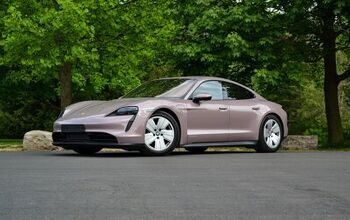
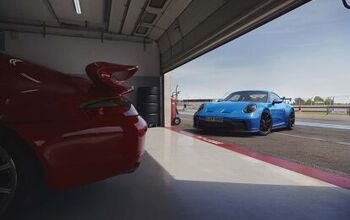




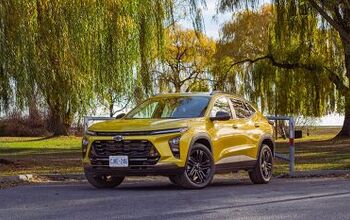

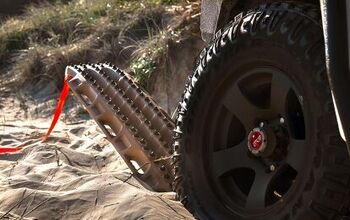


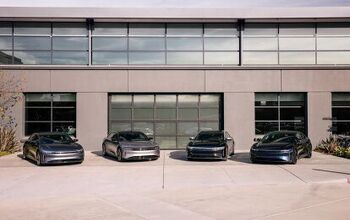


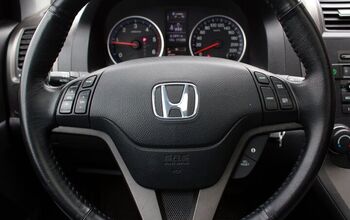
Comments
Join the conversation